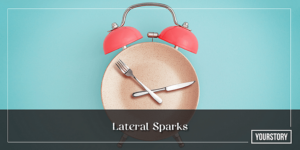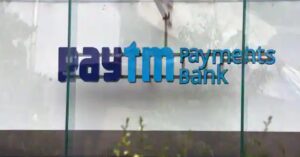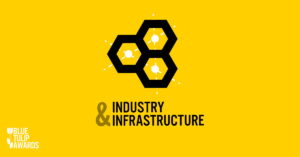Owning a home is a dream that many people share and work towards. But buying that big, dream house isn’t as easy as dreaming about it and the thought of how expensive purchasing a home can often discourage many. But even without a fat bank account consumers can become homeowners by way of mortgages.
Mortgages are one way a lot of people have been able to purchase their dream homes or acquire commercial spaces for their businesses. While mortgage applications may be accessible to every adult, not all applications are processed successfully depending on several factors including credit score, loan history, and income.
Although the rates and terms of a mortgage are discussed in detail during the application process and agreed upon by both the lender and borrower, some borrowers end up having a hard time making their monthly mortgage payments due to a change in their financial situation. Perhaps, at the time they took out the loan, they had no problem with the interest rate or term, but due to events like a change of job, a salary deduction, family growth, or a new financial commitment, those terms have become unfavourable.
People who fall into this category have the option of refinancing, a process that can save them from defaulting on their payment.
What is Refinancing?
Refinancing is the process of servicing an existing debt with a new one that is more favorable, having a better interest rate and loan term. Borrowers can benefit in several ways from refinancing. They can lower their monthly payment, save money on interest over the duration of the loan, receive cash from your equity in the home for any purpose, or pay off their mortgage sooner.
How Does it Work?
Typically, borrowers move to refinance their loans to get better rates and terms once they become aware of the fact that they can do so. This is often a response to a shift in economic conditions that influence interest rates. Some of these conditions include a National monetary policy, economic cycle, or market competition.
While seeking more favourable rates and terms are common goals with refinancing, some borrowers do so to switch from a fixed-rate mortgage to an adjustable-rate mortgage (ARM), or vice versa. It is worth mentioning that changes in rates caused by external economic factors are not the only reason consumers opt to refinance. An improvement in a borrower’s credit score could qualify that borrower for a lower rate or better term.
To fully understand how this works, let’s bring all this into a real-life scenario. Say you took out a 30-year mortgage with an interest of 10% and for the last 10 years, you’ve been making regular monthly payments but have become aware that interest rates have dropped due to certain economic conditions.
You can simply approach your lender and apply for a refinance. If you meet all the requirements and your application is successful, you may end up lowering the interest rate of the loan, thereby paying less for the rest of the loan term. You should bear in mind, however, that refinancing comes with closing costs that should be taken into consideration to determine whether the decision to refinance makes sense. These costs are usually between 2 and 5 percent of the amount you are refinancing. Closing costs typically include an origination fee, appraisal fee, and discount points.
Types of Mortgage Refinances

There are different types of mortgage refinances that appeal to different groups of people. They include:
- Rate-and-term
- Cash out
- Cash in
- Streamline
- No closing cost
Rate-and-term
When it comes to refinancing, rate-and-term refinancing is usually what comes to most people’s mind. In this type, your existing mortgage is replaced with a new one with different terms. Rates and monthly payments change, the loan term may also change.
VA, USDA, FHA, and conventional mortgages all qualify for rate-and-term refinancing. For a successful application, you’ll require a specific amount of equity in your home, a certain debt-to-income ratio, and credit score. Notwithstanding, the exact requirements will be determined by the type of mortgage the borrower has. Click here to learn more about a USDA mortgage.
Cash Out
This type of refinancing involves replacing the old loan with a new one with different terms. But the borrower takes out a loan that is more than what is left to pay on the home and receives the surplus cash.
Cash-out refinancing can be a great option for consumers who have built equity on their home. Most lenders don’t give out more than 80% of a borrower’s home’s value in cash, they’ll have to retain at least 20% equity. So, let’s say you have a home that is valued at $300,000, and you have 50% equity in the home, which is valued at $150,000, then you have another $150,000 left to pay on the mortgage.
If the lender insists you keep 20% equity in the home, this means you can take out 30% in cash which is $45,000. To this, you’d have to take a loan of $195,000, that is, the $150,000 you owed, and the $45,000 in cash. VA, FHA, and conventional mortgages are eligible for this type of refinancing, but this option is not available for USDA mortgages. However, there’s always the option to refinance from a USDA mortgage into a conventional one to receive cash.
Cash In
When applying for a mortgage refinance, most lenders expect borrowers to have at least 20% equity in the property. That is, they require your loan-to-value or LTV ratio to be 80% or less. If a borrower doesn’t have up to the required 20% home equity, but is still considering refinancing, the cash-in refinance is the way to go.
With this option, the borrower makes a large payment toward the principal to lower their LTV ratio. Let’s imagine the appraiser sent by the loan provider estimates your home’s value to be $100,000 and you still have $90,000 left to pay. Your LTV ratio will be 90%, which means you have 10% equity which isn’t enough to qualify for a new loan.
To build enough equity in the home, you’d have to pay $10,000 at once to lower the principal balance to $80,000. Now you have 20% equity, and your LTV ratio is now 80%, meaning you’re now eligible for refinancing. While the cash-in option is popular among consumers who seek to qualify for refinancing, it isn’t limited to just this group of people. The option is equally available for people who wish to get better rates or lower their monthly payments.
Streamline
Streamline refinancing allows consumers to refinance without their home being subjected to an appraisal. It is also common that consumers do not show their credit score, proof of income, or debt-to-income ratio either.
Borrowers who feel that their home has lost value typically choose this option since the value of your home won’t stop your application from being approved. It is also a good option for people who aren’t confident in their finances as well because you won’t be asked to show your credit score.
No-Closing Cost
As mentioned earlier refinancing or refinansiering, in Norwegian comes with closing costs that sometimes add up to thousands of dollars. However, with the no-closing option, you can get a new loan with a better term and rate, without the need to pay closing costs.
However, there’s a catch. You won’t be asked to pay any closing costs upfront, but you’ll end up paying it over time. Your provider can choose to include the amount in your mortgage or ask you to pay a higher interest rate.
Final Thoughts
Like most other things, there are pros and cons that come with refinancing mortgages.
Pros
1. Lower mortgage payment
2. Lower interest rates
3. Take out cash from your equity in the home
4. Switch from a fixed-rate to an adjustable-rate mortgage or vice versa.
5. Consolidate debt.
Cons
1. You reduce the equity in your home when you take out cash
2. High closing costs
3. Possibility of a longer loan term
4. Borrower’s remorse if there’s a significant drop in interest rates after closing.









